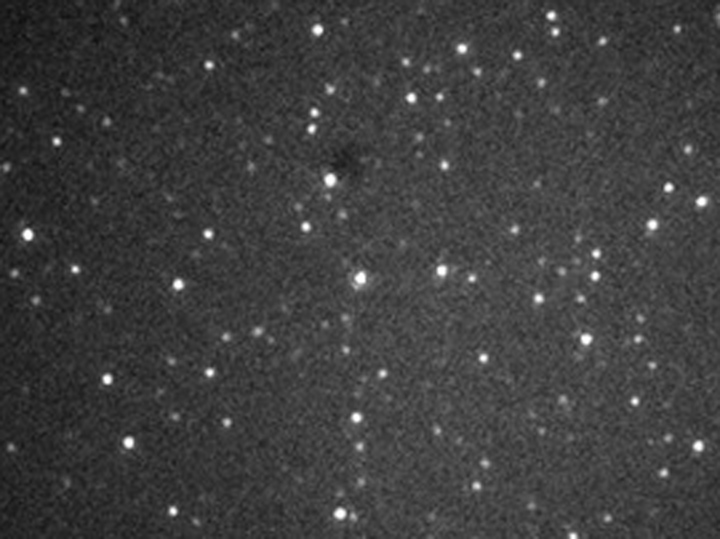“Eternal dye”: Professor Naumov explained why the Nobel Prize in Chemistry was awarded
[ad_1]
The 2023 Nobel Prize in Chemistry was, in fact, awarded for the world’s most reliable and easy-to-prepare dye. Moreover, the discoverer of a new method of coloring substances was our former compatriot, a specialist in the field of solid state physics and optics, Alexey Ekimov. Following him on the list are the Americans Louis Bruce and Mungi Bawendi. The prize, according to the official version, was awarded for the discovery and development of semiconductor quantum dots (nanocrystals). What are these points, how are they already improving our lives today? We talked with corresponding member of the Russian Academy of Sciences, professor, head of the Troitsk branch of the Lebedev Physical Institute and head of the department at Moscow Pedagogical University Andrei Naumov.
“We are very glad that the Nobel Prize was awarded to our compatriot, because it was in our country that the world’s strongest school of luminescence has always been located,” says Naumov. – We all know that the main natural dyes are organic molecules. They set the color of objects in diffuse and reflected light. But you can make objects glow if, for example, you point a laser at them. For example, recently in Svetlogorsk, which is located in the Kaliningrad region, I was told how to distinguish natural amber from fake: natural amber, containing luminescent dyes phosphors, glows white-orange in the light of an ultraviolet flashlight.
Alexey Ekimov, according to Naumov, was the first to come to the conclusion that organic molecules that give color to various objects can be replaced with semiconductors, and the color will be brighter and more durable.
Help “MK” A semiconductor is a solid-state crystalline material whose electrical conductivity is much less than that of conductors (metals) and greater than that of dielectrics (for example, rubber gloves).
The scientist guessed that if the semiconductor was reduced to a few nanometers (particles not visible to the eye), these small cubes or balls began to behave like luminescent molecules. Moreover, the frequency (energy) of the light particles emitted by them—photons—depends on their size, that is, ultimately, color.
“Ekimov was the first to synthesize such semiconductor nanocrystals in glass using a fairly simple method, and discovered the dependence of color on size,” explains Andrey Naumov.
– Why were these semiconductors called quantum dots?
– Dots – for their small sizes, and quantum ones – for their quantum nature – the presence of a limited number of energy states.
– Different colors in nature are caused by different molecules. To get a certain color from a semiconductor, its composition must also be special?
– This is the advantage of a semiconductor – it alone can produce the entire spectrum of colors, depending on the size of its nanocrystals. True, scientists are still experimenting with different crystal compositions.
– Our Alexey Ekimov clarified the dependence of the color of quantum dots on size, implemented their method of synthesis in glass, and for what did they give the prize to Louis Bruce and Mungi Bavendi?
– Bruce, working on the same problem in the USA, developed a method for synthesizing quantum dots in a colloidal solution, and Bavendi was one of the first to see the glow of a single quantum dot. Thanks to this, we will eventually learn to better understand the nature of light.

– Where are quantum dots used?
– Now there are a lot of these applications. New dyes are being created based on quantum dots, which hardly degrade over time, even when illuminated. Do you remember how long your receipt from the store lasts? In a month you won’t be able to read anything on it. And if you use quantum dots to create a dye, they will “hold the color” until the paper decays.
– I heard that there are devices based on quantum dots…
Here, the applied significance is determined by the ability of quantum dots to glow. Based on this, radiation sources were created – diodes for light bulbs, for LED matrices. But the first device where the average person encountered technology using quantum dots turned out to be… a television. One of the companies used these dots to increase the brightness of the screen and the saturation of tones, replacing ordinary LEDs with cells with them. Fast color conversion in a light wave is already used in optical quantum computers, in fiber-optic communication lines that cover the entire planet, and in encryption channels. Quantum dots are also used in solar energy to create cheaper solar cells.
I will note one of the brightest areas of application of quantum dots – detectors. One of the detectors that you and I know well is the human eye. But we see only in the visible range of light wavelengths – from red to violet. If you need to look in the ultraviolet or infrared ranges, you need other devices. For example, a regular matrix on a camera “sees” over a much wider range, but if it is coated with quantum dots, this range will expand even further – such a camera will take excellent shots even in complete darkness, without backlighting. Finally, quantum dots can be used as markers in biomedical analytics.
– Is it possible to create smart glasses with the help of quantum dots, through which it will be possible to clearly view the aurora?
– I think that this and many other applications for this technology will appear in the near future.
Newspaper headline:
Nobel Prize – and Quantum Dot
[ad_2]
Source link








